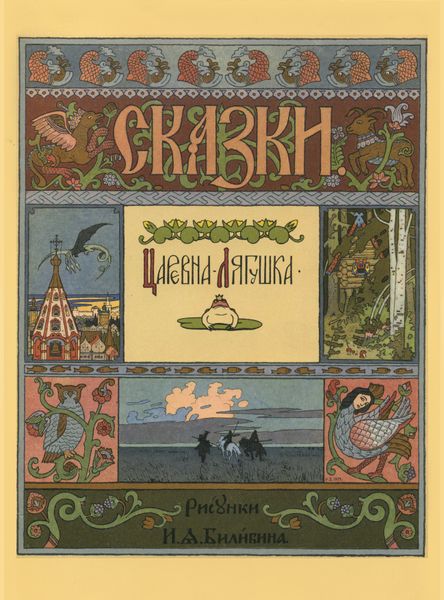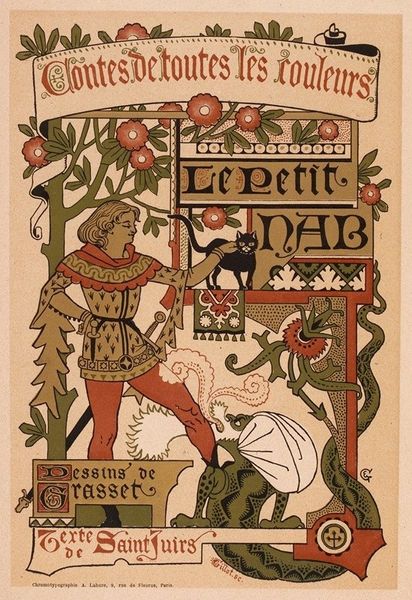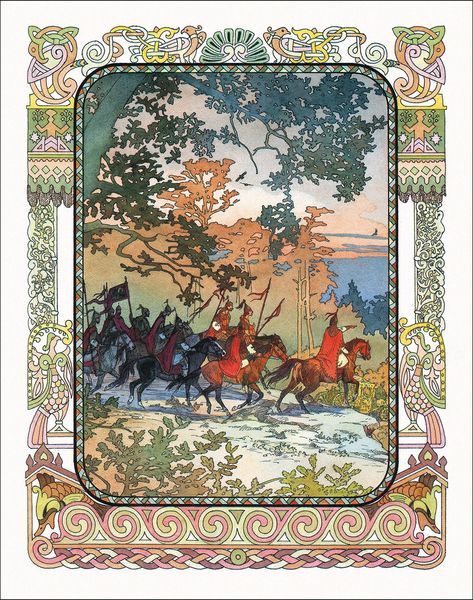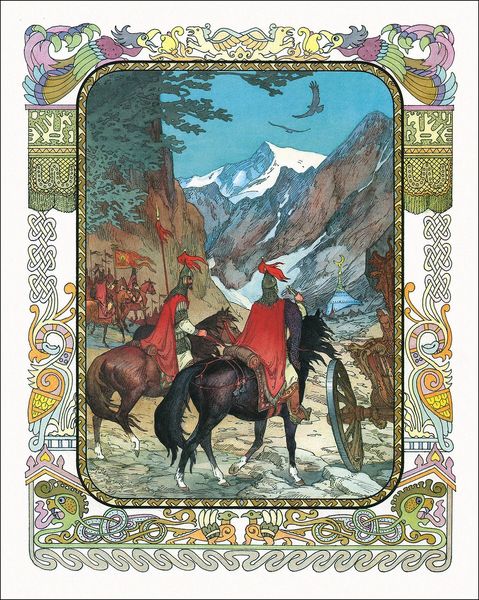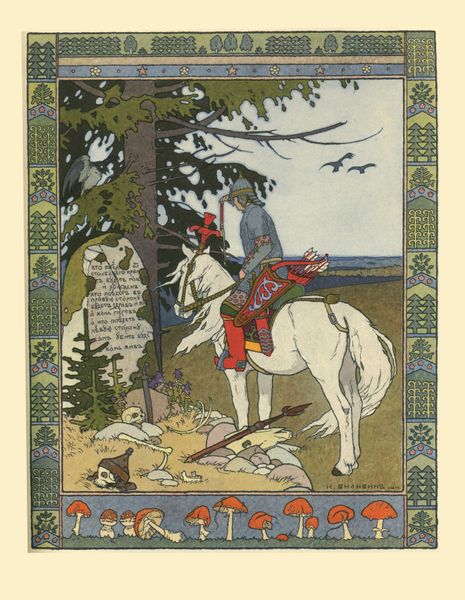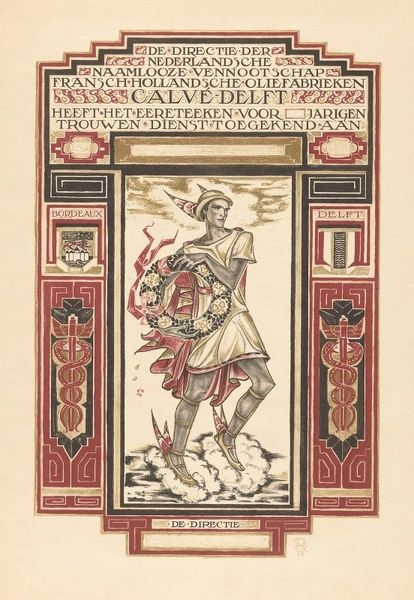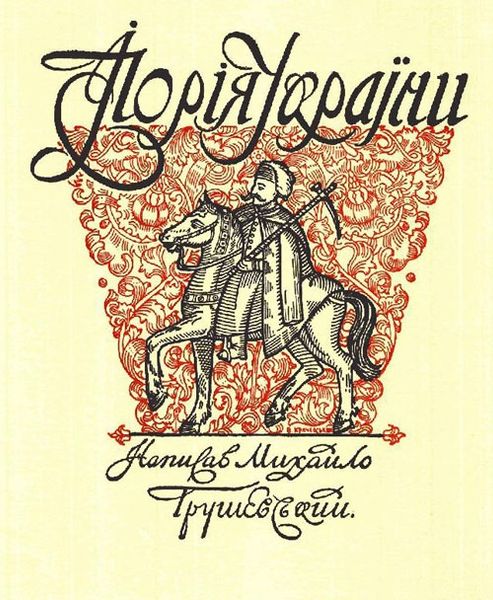
drawing
#
drawing
#
book
#
story telling
#
traditional media
#
text
#
illustrative and welcoming imagery
#
illustrative and welcoming
#
symbolism
#
russian-avant-garde
Copyright: Public domain
Curator: The illustrative drawing before us is the book cover for Alexander Pushkin’s "Tales", created around 1900 by Ivan Bilibin. What strikes you about it? Editor: Immediately, it’s the distinct flatness and stylized composition, recalling traditional woodcuts and folk art. It feels almost like a page illuminated by hand, celebrating not just content but craft itself. Curator: Indeed, Bilibin deliberately drew inspiration from traditional Russian sources, embracing symbolism and stylization. Notice the highly ornamental borders enclosing various allegorical characters. These borders function as framing devices and are also integral elements to the overall composition, blurring the boundaries between the primary scene and the decorative. Editor: It is amazing, a seamless convergence of aesthetic design, traditional artisanship, and narrative symbolism. I appreciate how it elevates bookmaking into a revered artistic endeavor that links print and page, craft and consumption. Do you observe the distinct way he integrates text with these designs? Curator: Yes, the incorporation of text isn't merely functional but becomes an artistic choice of form and dimension. He has masterfully integrated the lettering into the artwork, using typography as an extension of his drawing. Notice how this integration unifies textual and visual narrative in what one might term an inseparable, synthetic totality. Editor: Given that Bilibin was involved in stage design, the page seems staged, designed in ways to transport the readers through theatrical presentation. Bilibin doesn’t merely present Russian folk tales; instead, he crafts and manufactures the aesthetic, visual world which shapes and sustains them. Curator: A pertinent observation. Considering your materialist take, the context certainly bears significance. Bilibin created this as Russia underwent significant modernization, using a nostalgic aesthetic as a symbol for this pre-modern heritage. Editor: Exactly. He makes Russian folk tales into desirable, marketable goods; how Bilibin skillfully employs these media is of utmost significance. He seems to say that even tradition must be remade through conscious practice and careful circulation. Curator: This work offers such depth to examine, whether one chooses to study its intricate components, stylistic synthesis, or socio-historical implication. Editor: It’s amazing how much material complexity is packaged in this book cover, pushing beyond illustration towards critical engagement.
Comments
No comments
Be the first to comment and join the conversation on the ultimate creative platform.
